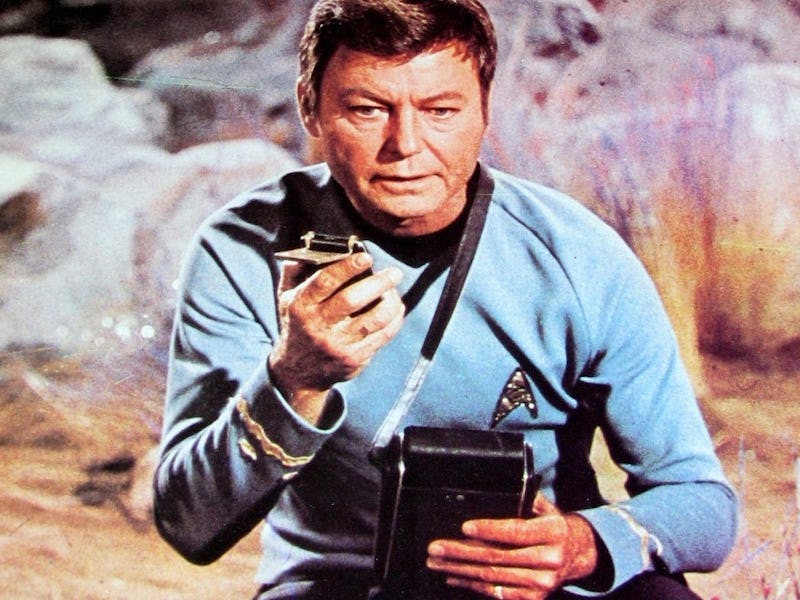Experimental Tricorder-Like Tech Would Work Remotely
Once developed, the tech could work like a hand-held MRI machine.

Electrical engineers at Stanford University are taking steps toward developing a device that can remotely detect embedded objects in water, soil, and human tissue.
Much like the fictional “tricorder” used on Star Trek by the crew of the USS Enterprise, an imaging system that combines the use of microwaves and sonography is being tested by Stanford’s Assistant Professor Amin Arbabian and Research Professor Pierre Khuri-Yakub, as announced by the university’s website on Monday.
The technology was originally intended for the detection of buried plastic explosives.
If this experimental tech were applied to the search for a buried Improvised Explosive Device made from plastic—invisible to a metal detector—it would work by sending out slight pulses of microwaves, creating a disparity in heat between a buried bomb and the soil, which absorb heat differently.
The dirt reacts to heat faster than plastic, and does so by expanding. The expansion generates measurable ultrasound pressure waves formed by the compression of the ground around a hidden weapon. The device could pick up on those ultrasound waves to spot buried threats, while never physically interacting with the earth, removing the threat of contact detonating an explosive.
Professor Arbabian’s team was also curious to see if this remote sort of sensory could be used medically, and rigged a flesh-like target with a mass concealed within. From approximately a foot away, the microwave pulses were applied — and it did heat the faux skin by a thousandth of a degree —which is not harmful. Nonetheless, readable ultrasound waves were again successfully generated, and the hidden mass was positively located.
The Stanford team feels this proposed method of search could be viable for medical use in 10-15 years by being used to potentially spot tumors and other health issues. However, unlike modern, stationary CT, MRI and X-Ray machines, a radio frequency/ ultrasound hybrid imaging device could be hand-held — much like the aforementioned handy-dandy tricorder.